Teapot Material: Glass, Ceramic, and Cast Iron Teapots
August 06, 2025
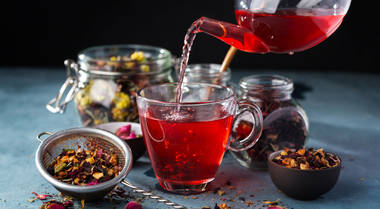
Which Teapot Material Is Right for You?
When it comes to tea, most of us spend a lot of time thinking about leaf origin, flavor profiles, and steeping time, but what about the teapot itself? The material your teapot is made from can quietly influence everything from the taste of your tea to how well it stays warm. Whether you're a seasoned sipper or just dipping your toes into the world of loose leaf, understanding teapot materials can take your brewing experience to the next level.In this guide, we'll walk through some of the most common types of teapots—ceramic, glass, cast iron, Yixing clay, and glazed iron—breaking down their pros, quirks, and best uses. By the end, you'll have a better sense of which one might suit your tea rituals best.
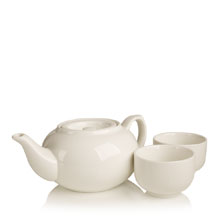
Ceramic: The All-Purpose Favorite
If there's a "classic" teapot material, ceramic is it. You've probably seen ceramic teapots in every color, pattern, and size imaginable… and for good reason! Ceramic does a solid job of holding heat, which is key for black teas and herbals that steep best at higher temperatures.Most ceramic teapots are glazed, meaning they have a smooth, non-porous interior. This makes them super versatile: you can brew a wide range of teas without worrying about flavor carryover from your last session. Whether you're steeping a malty Assam in the morning or a calming chamomile at night, ceramic's got your back.
That said, ceramic isn't invincible. It can chip or crack if handled roughly, and it doesn't hold heat quite as long as some other materials. Still, it strikes a great balance between performance, affordability, and aesthetic charm, especially for everyday use.
Best for: black tea, green tea, oolong, herbal
Avoid if: you want ultra-durable or ultra-hot brews
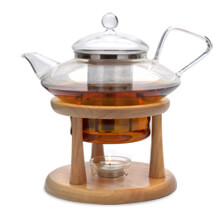
Glass: See What's Steeping
Glass teapots offer a sensory experience that's hard to beat. They let you see your tea as it steeps—watching the leaves unfurl, the color deepen, and maybe even a blooming tea flower open in real time. Some might say it's almost meditative.Functionally, glass teapots are non-porous, which means they won't hold onto past brews or affect the flavor of your current cup. This makes them ideal for switching between tea types or experimenting with new blends. Plus, they're easy to clean and look downright elegant on the table. Something like our Concert Teapot.
However, glass isn't great at retaining heat. If you're brewing teas that require a long steep at high temperatures (like pu-erh or strong black teas), you'll need to pre-warm the pot or drink quickly. For lighter teas like white or green, though, it's a beautiful match.
Best for: green tea, white tea, flowering tea, visual presentation
Avoid if: you want long-lasting heat or high durability
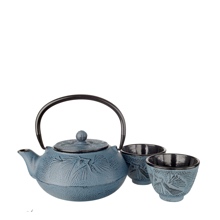
Cast Iron: The Heavyweight Steeper
If you're after a teapot that keeps your tea hot for a long time, cast iron is your winner. Originating in Japan, traditional cast iron teapots (called tetsubin) have long been favored for their incredible heat retention and durability. Many modern cast iron teapots come with an enamel coating inside, which prevents rust and makes them suitable for any type of tea.The thick walls of a cast iron teapot heat up evenly and hold that warmth for a while. Perfect if you like to sip slowly or serve multiple cups without re-steeping! They also often come in intricate, beautiful designs, adding a little ceremonial elegance to your routine. Just have a look at the Nara Teapot.
The downsides? They're heavy, and they need a bit more care (especially if the enamel wears over time). But if you're serious about tea and want a pot that can practically double as a hand warmer in winter, cast iron won't let you down.
Best for: black tea, oolong, herbal blends, long sessions
Avoid if: you want something lightweight or low-maintenance
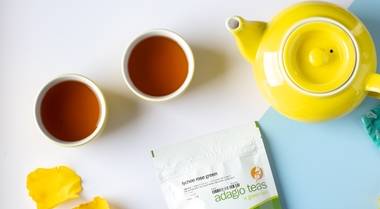
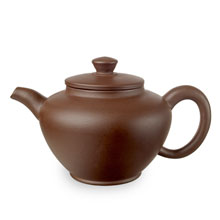
Yixing Clay: A Teapot with Memory
Yixing teapots are made from a special type of porous clay called zisha, traditionally sourced from the Jiangsu province of China. These teapots are beloved by tea purists for one very special reason: they absorb the flavor of your tea over time.Used regularly, a Yixing teapot develops a sort of tea memory, enhancing each new brew with traces of the last. Because of this, it's best to dedicate a Yixing teapot to just one type of tea (like oolong, pu-erh, or a specific black tea). With consistent use, your teapot becomes uniquely seasoned, deepening the experience every time.
These pots are typically smaller in size, making them ideal for Gongfu-style brewing, where tea is prepared in multiple short infusions. They're not glazed, so they require more careful cleaning (just rinse with water—never soap). But for those willing to nurture their teapot like a plant, the payoff is rich and rewarding. The Dalian Teapot is one of our favorites.
Best for: pu-erh, oolong, black tea, single-origin devotion
Avoid if: you like switching tea types often or want low effort cleanup
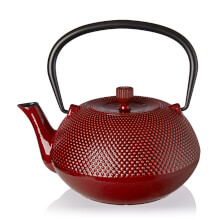
Glazed Iron: The Stylish Workhorse
Glazed iron teapots are something of a hybrid, offering the heat retention of cast iron with a more modern twist. These teapots often feature bold, contemporary designs and a sleek enamel coating on the inside. That makes them easier to clean and less prone to flavor absorption compared to traditional cast iron or unglazed clay. We haveGlazed Cast Iron Teapots in a variety of colors.
While not as common as other materials, glazed iron is a solid option for anyone who wants a durable pot that still offers great heat performance without needing as much care as bare cast iron. They're also usually a bit lighter, which is a nice bonus for everyday brewing.
Best for: strong teas, serving guests, design-forward tea setups
Avoid if: you prefer classic styles or want a super lightweight pot
Choosing Based on Your Tea Style
As with much tea-related advice, there's no single "best" teapot material. It really comes down to how you like to brew and what kind of tea experience you're after.If you enjoy variety and want a reliable go-to, ceramic is a great place to start. Love watching the steeping process? Glass adds visual flair to your tea ritual. Want your tea to stay piping hot between refills? Cast iron has your back. Devoted to a single type of tea? Treat yourself to a Yixing. And if you want durability with a modern twist, glazed iron might be your new favorite.
Whichever teapot you choose, the important thing is that it helps you connect with the process of making tea, whether that's a quiet solo ritual or a gathering of friends on the porch.
The Final Steep
Tea is as much about the experience as it is about flavor, and the teapot you brew with can shape that experience in subtle but meaningful ways. So go ahead! Explore, experiment, and find the vessel that feels just right for your hands, your tea, and your routine.Remember that the best teapot isn't the fanciest or the most traditional. It's the one you reach for again and again.